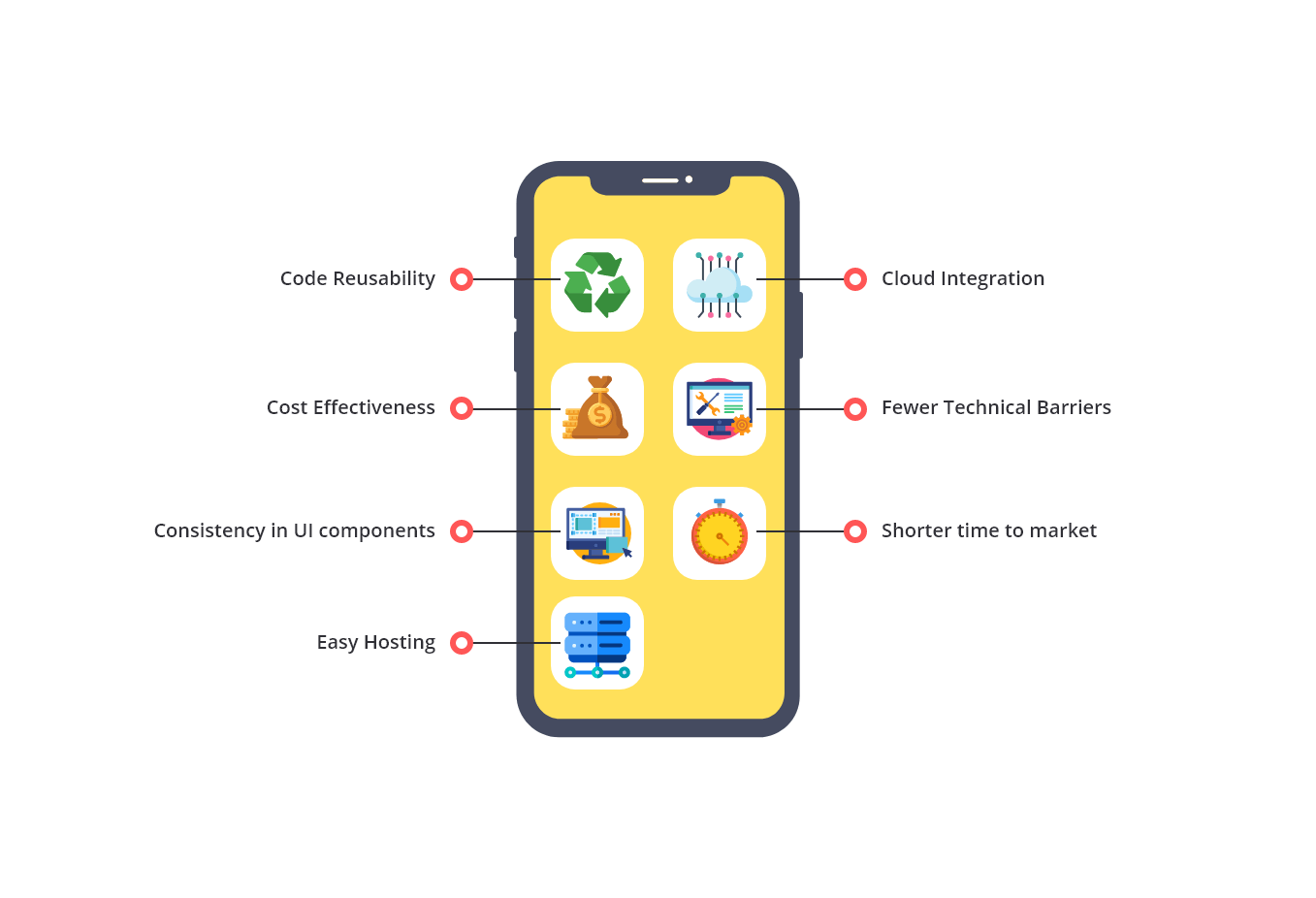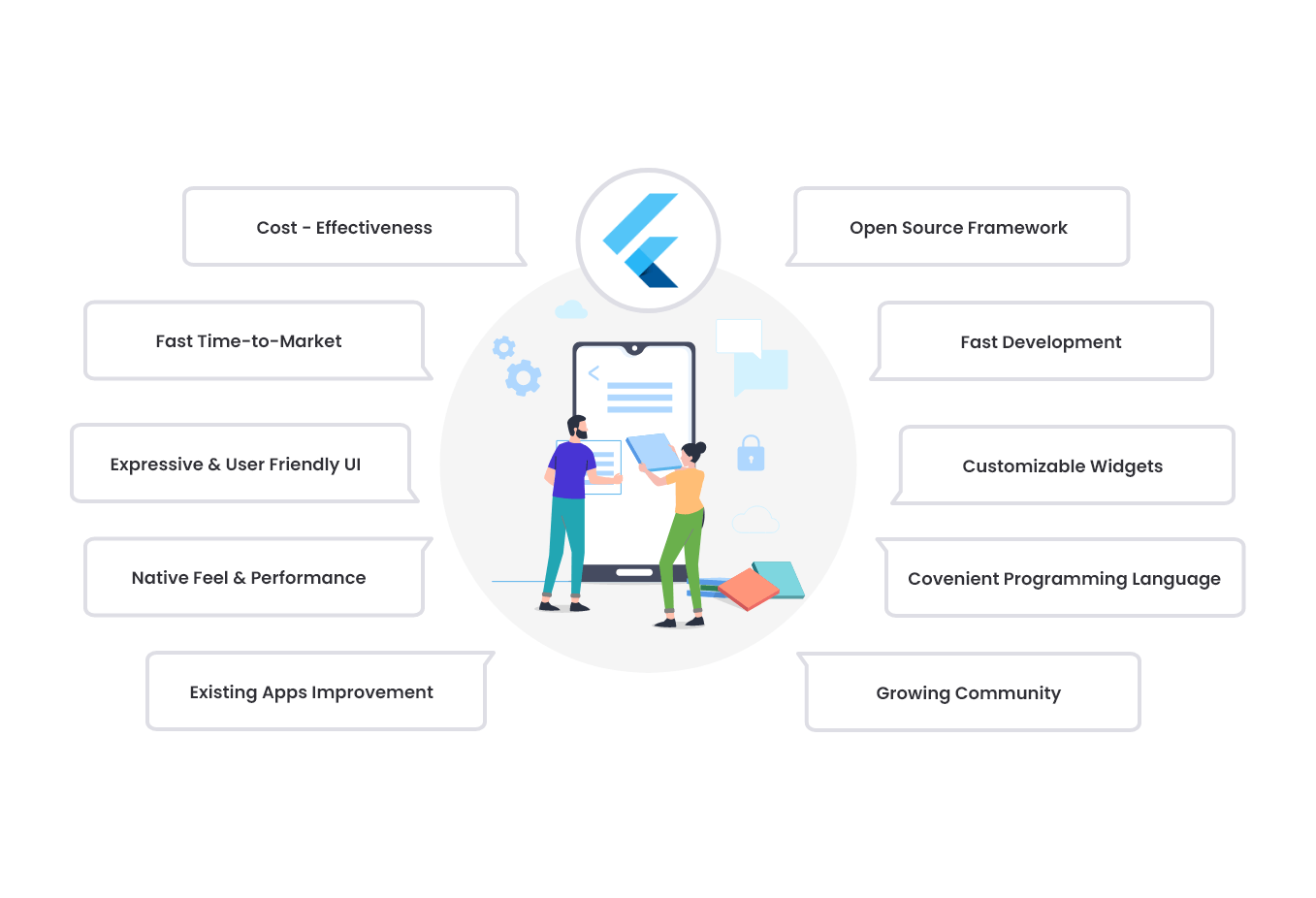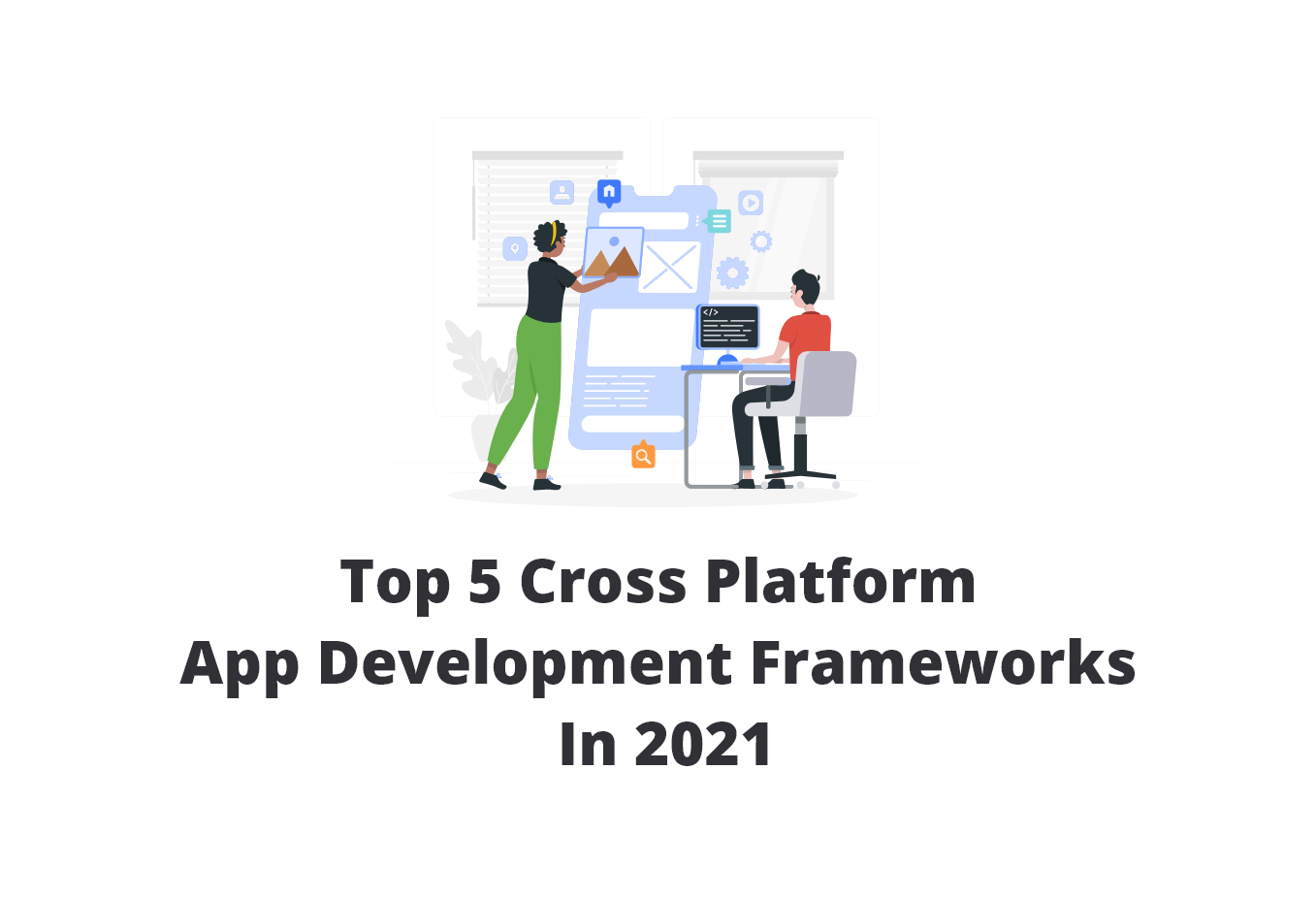One of the most sought-after mobile application projects and workflows among SMEs and bigger businesses is the ability to develop performance-heavy and secure cross-platform mobile apps. Thus, cross-platform mobile app development is an important and often vital effort that enables companies to rapidly design and deploy mobile assets across many platforms without re-coding for each native Operating System (OS) and platform.
Why is Cross-Platform Mobile App Development Necessary?
The time, resources, and monetary expenditures needed for these initiatives are the most important variables that executives consider when developing companies’ digital company assets by designing mobile apps. Following that, the time-to-market, management requirements, and overheads required to build for each native platform are often the most important elements of the project. By utilizing a single process for several platforms, cross-platform development allows businesses to reduce development and maintenance expenses by half.
According to a 2020 developer poll on Statista, React Native is the most popular cross-platform mobile framework.
Cross-platform development is a software engineering method that results in a mobile application that operates across several mobile operating systems and platforms without re-coding for each native platform. This reduced code decreases the time, cost, and money required to create the same app if designed. And this is especially true for each native platform and operating system.
Consider the following key platforms and operating systems in the mobile platform/OS ecosystem:
1. iOS: The iOS platform is Apple’s exclusive, closed-OS linked with Apple devices such as the Apple iPhone and iPad.
2. Android: This is a Google-owned, fragmented, open-OS linked with smartphones (e.g., Samsung phones), smart-watches, smart technology, mobile systems, and smart-watches.
Many distinct kinds of mobile applications must be understood to determine the true power – and usefulness – of cross-platform development tools:
-
- Native Mobile Applications: Native mobile applications are designed to be a platform or mobile OS-specific.
-
- Mobile Cross-Platform Applications: Cross-platform mobile applications must operate on various mobile platforms and operating system. Also, they don’t make developers re-code for particular native platforms.
-
- Mobile Applications with Hybrid Functions: Hybrid mobile apps are applications that look and feel like native apps yet run using web app technology.
-
- Apps for the Web and Mobile: Mobile web applications include what seem to be “native” mobile apps launched on a mobile platform yet run in a web browser while needing an internet connection.
Mobile application development platforms and mobile application development frameworks are the two most important mobile app development technologies for creating cross-platform mobile assets. The latter is often used in conjunction with other tools to create cross-platform mobile apps. Therefore, understanding the market for such development tools will assist businesses in using these technologies to build the most robust feasible apps.

Our Top Five Recommended Tools in No Particular Order
Many best practices and frameworks, toolkits, SDKs, and platforms are essential to create effective cross-platform mobile apps. This list of suggested tools covers well-known mobile development hybrid app frameworks like Flutter and more traditional mobile app frameworks like Xamarin.
Several criteria differentiate the best cross-platform development tools from those that are encouraged but not top-tier, including:
-
- The workload in development: Finally, the goal of a cross-platform development project is to reduce the development burden and resource needs. These cross-platform technologies enable engineers to drastically decrease the workload. And this creates the greatest applications for the lowest price while spending the least amount of time in the app’s development stages.
-
- Compatibility with Platforms: To be top-tier development tools, cross-platform development tools must support several platforms or the main platforms (i.e., iOS and Android). While some frameworks support more obscure systems, most contemporary platforms support Android, Windows, iOS, macOS, and so on.
-
- Usability: A mobile app created using a powerful cross-platform tool must provide a great user experience. And it also must include all of the features of an outstanding mobile application on the user’s side.
-
- Scalability: Enterprise Mobile applications that must grow with a business and consumer apps that must fulfill the long-term objectives of a company’s mobile strategic plan should be built with scalability in mind (through cross-platform frameworks and technologies). Regardless of the platform used, such mobile applications should satisfy the long-term needs of a company’s strategy.
-
- Security: Robust cross-platform solutions fill in all security vulnerabilities and holes created inside a mobile business application, independent of the platform deployed on.
-
- Functionality/UI: Regardless of the platform chosen for deployment, the finest cross-platform solutions should offer a functioning and enterprise-level UI for all mobile applications they create. Such tools should also enable developers to include the finest, most sophisticated, and most essential features in a mobile app. They should make it feasible for a cross-platform mobile app to use as many native hardware functionalities as possible.
They should make it feasible for a cross-platform mobile app to use as many native hardware functionalities as possible.
1. Flutter
This is a Google-owned, open-source SDK that enables cross-platform creation of high-performance iOS and Android applications. Flutter has many features, such as material design, smooth animations, a customizable UI, and out-of-the-box SDKs. Flutter also contains the following features:
-
- Development of stock platform apps is supported
-
- Support for 2D mobile apps
-
- Compatibility for native device features like cameras, location, storage, and so on
-
- Creative, robust designs
Mobile app developers use Flutter to build powerful mobile applications for iOS and Android using the Dart programming language.

2. React Native
React Native is an open-source, lightweight, quick, and resilient cross-platform development framework. Facebook developed it to build mobile apps for Android, iOS, the Web, and UWP. The main benefit of adopting React Native is providing native platform features for cross-platform mobile applications. Also, React Native has a plethora of useful features, including:
-
- Uses JavaScript as the programming language to build mobile apps
-
- Mobile app design and development with a focus on the user interface
-
- Third-party library integration
-
- Workflows that “write once and use everywhere.”
-
- For installation, it uses NPM (Node Package Manager)
-
- Reload mobile development on dual screens and in real-time
-
- Reduced development durations
React Native focuses on creating the finest Native and cross-platform mobile applications. In addition, it employs JavaScript and GPU-oriented development methods to create high-performance mobile apps.
3. Sencha
Sencha is a popular, powerful, HTML5-based, cross-platform framework for developing mobile user interfaces and Web and mobile apps using HTML, CSS, and JavaScript. Sencha/Sencha Touch, as an enterprise-level SDK and development option, focuses on creating touch-based apps for iOS, Android, Blackberry, and other systems that can reap the benefits of and utilize native device functionalities and APIs. Sencha has a plethora of features, including:
-
- UI that can be customized
-
- It uses hardware acceleration to boost performance and provide the fastest operating speed available
-
- A substantial code and component library
-
- Developers may use the “infinite scrolling grid” functionality to different aggregate characteristics for later retrieval.
-
- To guarantee optimum development workflows and safe data operations, it uses strong data management and security procedures
Sencha Touch is a simplified, comprehensive solution for developing quick and intuitive mobile apps for iOS, Android, and Kindle Fire using front-end web languages and technologies (e.g., JavaScript, HTML, and CSS).
4. Appcelerator
This is a Titanium SDK development framework and online platform for developing native and cross-platform mobile apps in JavaScript and sophisticated mobile APIs. It works with several platforms and technologies and has monthly and annual subscriptions.
Appcelerator is a powerful enterprise-level mobile development framework that includes real-time analytics, benchmarking, data testing, database integrations, cross-platform code reuse, Hyperloop API access (direct access to iOS and Android APIs via JavaScript), implementation with third-party libraries, and much more.
Moreover, Appcelerator is a mobile app design and development framework used to create and design iOS, Android, and Windows Mobile applications using a drag-and-drop designer, user-friendly app builder, and multilingual user interface. Along with Titanium code, the framework employs several technologies, namely Java, JavaScript, Objective C, and Swift.
5. Xamarin
This is a cross-platform, C# and NET-based mobile app development platform simplifies the engineering, development, and deployment of Android, iOS, and Windows Mobile apps. Xamarin offers a plethora of powerful features that make it a popular option among app developers:
-
- PCL is used for backend interactions
-
- It uses mobile SDKs to create mobile applications (on desktop systems) that are mobile responsive
-
- Written in C# and is extremely compatible with Visual Studio
-
- Supports Type-Checking
-
- For mobile app developers, a one-size-fits-all solution
Xamarin uses Visual Studio as a powerful, enterprise-level mobile development platform. And this helps developers to deploy sophisticated mobile app development and design processes using C# and NET. Also, the toolkit is designed for open source development and interacts with high-quality APIs.
Consult with Cross-Platform Mobile App Development Experts
Businesses nowadays confront fierce competition, and their primary emphasis is on their target audience. As a result, companies should use as many cross-platform app development tools as necessary.
You can discover a solution to handle all of your mobile app development requirements in our top five cross-platform mobile development tools. It is not always simple to choose the finest development tool since there are many choices on the market. So, you can seek the advice of professional mobile app developers.

